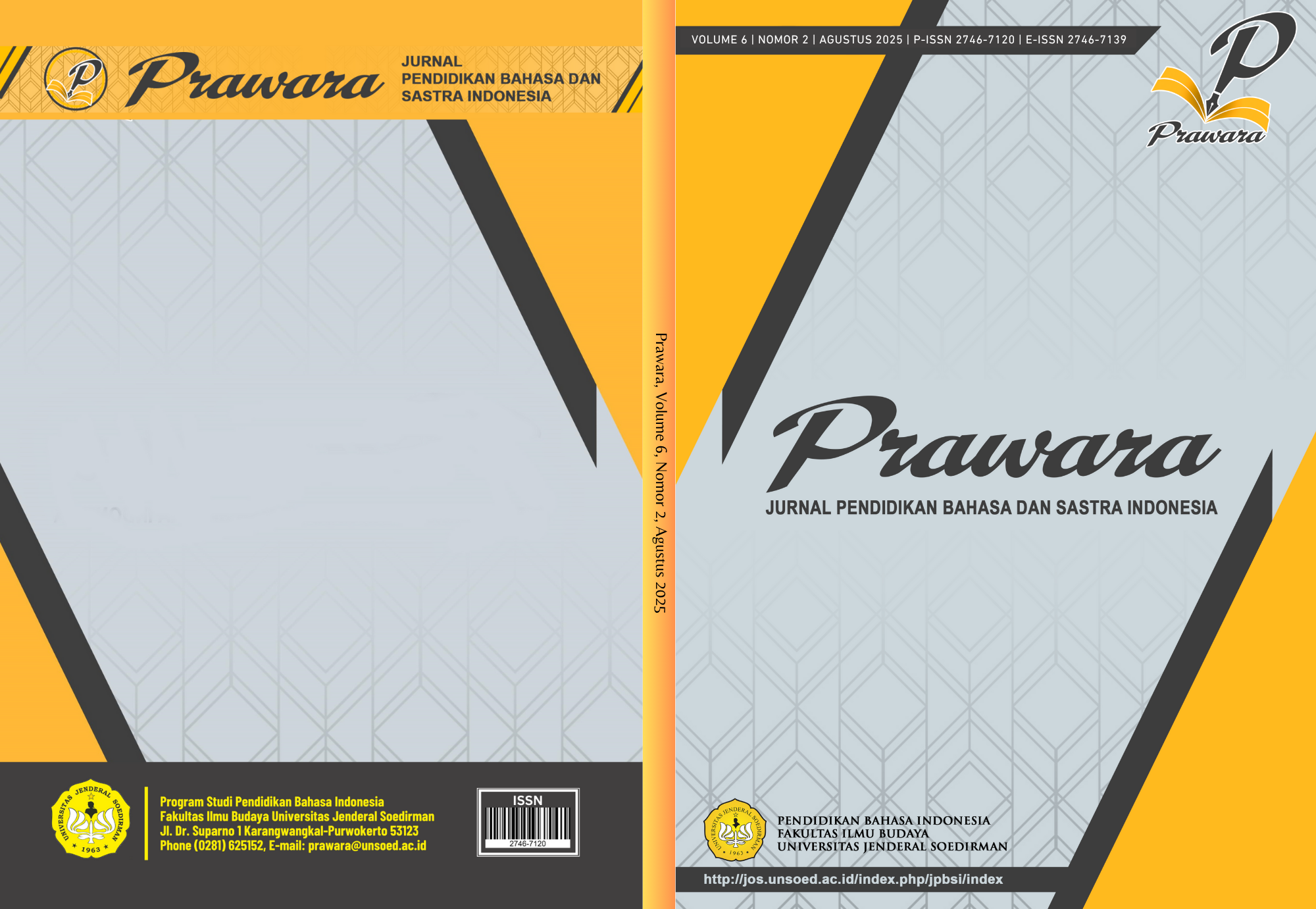Phonological Characteristics Brebes Border Java Dialect Lexiocon with Standard Java Language: Contemporary Dialectology Study
Abstract
This study examines the phonological characteristics of the lexicon of the Brebes Javanese dialect used in the Sunda border region, with Standard Javanese (Jogja-Solo). The purpose of the study was to identify the phonological differences in variation that emerge from the standard language and to analyze the factors that influence these variations. The research method used was descriptive qualitative with data collection techniques through in-depth interviews with informants who met certain criteria. The results of the study showed that the Brebes Javanese dialect has several different phonological characteristics compared to standard Javanese, occurring in the more open vowel [a], neutralization of vowels [i] and [u], and reduction of retroflex consonants [ʈ] and [ɖ] to [t] and [d]. In addition, a syllable stress pattern was also found compared to Standard Javanese. Factors such as geographical isolation, the influence of neighboring languages (Banyumas and Sundanese), and natural phonological changes also contribute to these differences. These findings provide an important contribution to the understanding of dialect diversity in Javanese and efforts to preserve regional languages in Indonesia. This study also recommends the need for further study of the impact of globalization on phonological changes in Javanese dialect.

This work is licensed under a Creative Commons Attribution 4.0 International License.
Authors who publish with Prawara: Jurnal Pendidikan Bahasa dan Sastra Indonesia agree to the following terms:
- Authors retain copyright and grant the journal right of first publication with the work simultaneously licensed under a Creative Commons Attribution License (CC BY) that allows others to share the work with an acknowledgment of the work's authorship and initial publication in this journal.
- Authors are able to enter into separate, additional contractual arrangements for the non-exclusive distribution of the journal's published version of the work (e.g., post it to an institutional repository or publish it in a book), with an acknowledgment of its initial publication in this journal.
- Authors are permitted and encouraged to post their work online (e.g., in institutional repositories or on their website) prior to and during the submission process, as it can lead to productive exchanges, as well as earlier and greater citation of published work.

This work is licensed under CC BY 4.0 .




.png)





 UNIVERSITAS JENDERAL SOEDIRMAN
UNIVERSITAS JENDERAL SOEDIRMAN
